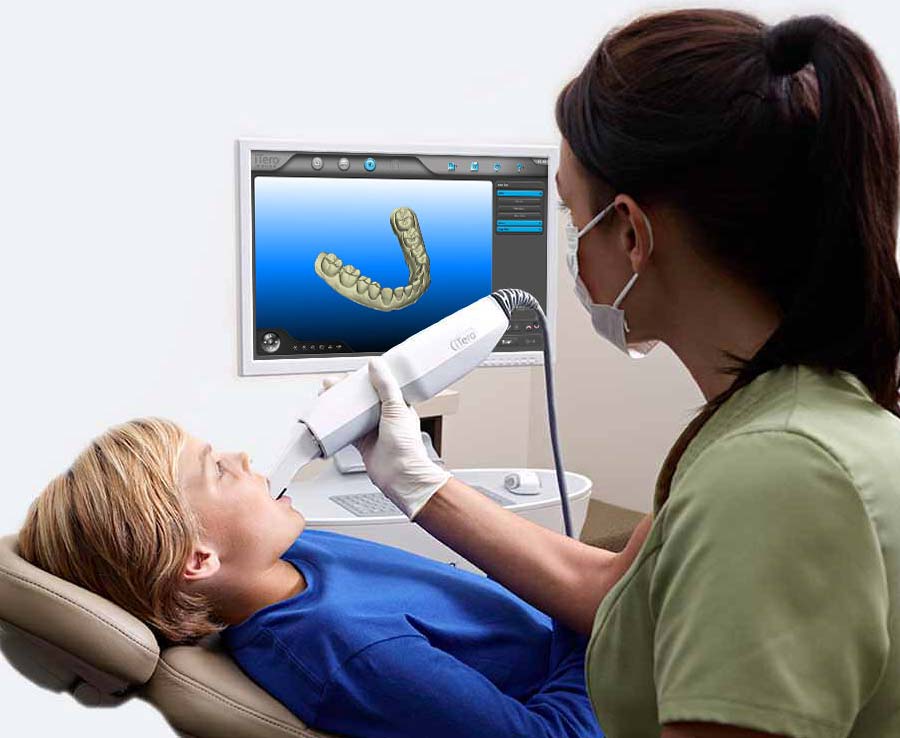If you’ve ever had a dental crown, dental bridge or dental braces, you probably remember what it’s like to take a dental impression: A tray filled to the brim with putty was placed over your teeth. You were told to sit very still without swallowing for several minutes as it set, which may have caused you to gag. But being the trooper you are, you did your best, knowing that impressions were necessary to create your dental appliance. Luckily, it may just be a distant memory, because the way dentists take dental impressions is starting to change for the better!
Thanks to the creation of the digital impression system, the need for traditional dental impressions may eventually be a thing of the past. Digital impressions use digital technology to create your dental restoration on a computer — no invasive trays or goop involved. In fact, digital impressions have all but eliminated the mess and discomfort often associated with dental impressions.
Let’s Get Digital
The digital impression system uses digital imaging to make your dental impressions. Wired to the digital impression system is a dental instrument that contains a tiny camera known as an intraoral scanner. Unlike the digital camera you have at home, the intraoral scanner takes multiple pictures of your tooth and the surrounding area; then it compiles the data to create a three-dimensional model of your dental restoration.
Once your tooth is prepared, it takes only minutes for your dentist to scan the area and create your dental restoration right on the computer screen. The final image is e-mailed to a technician to prepare the mold, who in turn sends it to a dental lab to create the final product. Digital imaging allows for the impressions to be sent to the lab immediately, resulting in a shorter turnaround time to produce your dental restoration.
Dressed to Impress
There are several advantages to using the digital impression system. Digital impressions often mean less gagging, shorter dental appointments and a reduced margin of error associated with traditional dental impressions. Without the risk of saliva or debris compromising the results of your dental restoration, your dentist shouldn’t have to retake a dental impression or remake a crown.
Not only does the accuracy and precision of the digital impression system correct these dental problems, but it also creates less work for your dentist, who may not have to reshape your dental crown or bridge after receiving it from the lab. Want to know another neat fact? Digital impression systems are now being used to create same-day dental restorations, so you can have all of your work done in just one dental visit!
Excuse the Pun
There are some drawbacks to digital impressions. Most digital impression systems have been designed to create permanent restorations, so using them to create dentures and partial dentures is out of the question — for now. As digital impression systems are also a major purchase for any dental office, the cost may be passed on to the consumer.
Regardless, dentists who do own a digital impression system are incredibly impressed by the technology. Patients love the comfort and convenience of it, too. While many dentists are discovering the advantages of this state-of-the-art dental technology, it has yet to catch on at most dental offices.

